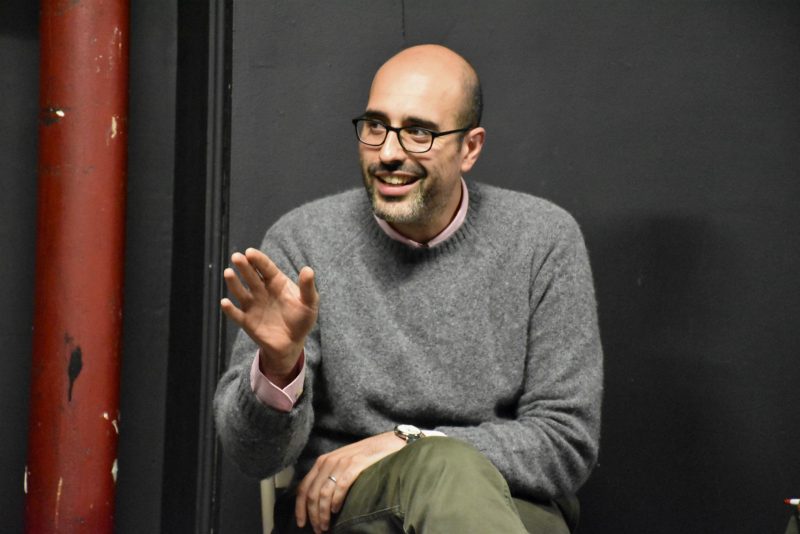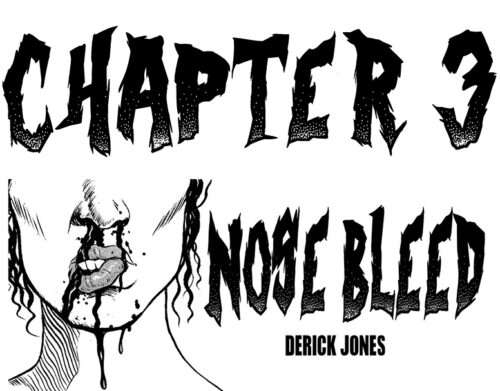
To suggest that the central aim of The St. Claire/Artblog’s Art Writing Competition is to cultivate art writing in Philadelphia and its environs is not without some justification. As the editors of The St. Claire and the Artblog state, “The goal of [the] competition is to get more people writing about art and foster a culture of art writing that incorporates a wide spectrum of methods, styles and ideas.”
At first blush, this seems like a perfectly reasonable endeavor, one that is, presumably, based on the following basic observation—the reception of art in Philadelphia has not gained as much momentum as perhaps it ought to have and this needs to be constructively addressed. The Art Writing Competition is a mechanism through which art writing can be potentially vivified and, moreover, create the feeling that the reception of the products of the arts community in Philadelphia is dynamic.
This feeling of dynamism is, in direct contradistinction to the posited aim of the Art Writing Competition, utterly fleeting. The feeling lasts only as long as the Art Writing Competition is in the mind of the arts community. The reason for this is down to the process of competition itself and not because of any capricious or dilettantish character of the members of the community. In other words, it is the mechanism of competition that produces the very opposite of “[fostering] a culture of art writing” and not the pathological disposition of individuals.
In this article, I want to explore the contradiction inherent in using competition as a progressive form of cultural cultivation.
Competition as condition
When I first heard about the Art Writing Competition, I was immediately struck by the fact that the device through which The St. Claire and the Artblog mobilized in their attempt to cultivate art writing in Philadelphia was competition. Why competition?
Competition is an integral, constitutive aspect of life under advanced capitalist societies. At the most general everyday level, we are all competing for jobs regardless of what our specialty is. If you are a car mechanic or an academic, you have to compete for work. Competition is the great social equalizer. It reduces everything we do to its power of coercing us into situations in which we have to fight to exist. This general experience of competition, one that so many of us have all felt, is not simply limited to paid work but is also located in more specific social-cultural arenas. An example is that of the arts sector.
Artists are very used to competition—they battle for positions on MFA programs, grants, and other funding avenues, fellowships, and residences. The immediately recognizable consequence that artists face when caught in the state of endless competition is unequivocal: artists become individualized practitioners, cut off from the possibility of the construction of a different social form of artistic existence, something that could be called a “collective” or a “social movement,” one that would generate tactics that problematize and resist precisely the kind of mechanisms that force artists into states of endless competition. Under the current conditions of a vivified competition-apparatus, to be an artist is to continuously compete against other artists, and other cultural practitioners. In other words, competition is a crucial condition of being a contemporary artist.
The two sides of competition
It is clear that competition, on a purely formal level, cultivates a dynamically productive energy. But this is only a partial, one-sided view. Competition is also a direct expression of the complex dissolution of ways of being socially engaged with one another as more than symbols of individualized cultural distinction since what it does is constantly pit us against each other.
With the sense that competition constitutes a condition of our current sociality (that is, what mediates our interaction with each other), we can turn to the Art Writing Competition. To my mind, the editors of The St. Claire and the Artblog have not adequately reflected on the double character of competition. On the one hand, writers will indeed send in submissions to be reviewed by a jury and selected as a “winning” text or not and this will give us the illusion—temporarily, at least—that there is a vibrant art writing scene in Philadelphia. On the other hand, writers who are competing for a few hundred dollars and institutional recognition are cast into a competition with one another, a competition that reflects the general state of competition that animates everyday life.
One question that emerges is the following: is competition the most progressive way of cultivating an artistic-intellectual community, one that focuses on the reception of artistic initiatives and activities that occur in a particular place? In a sense, competition cannot be a progressive social form since it articulates the very status quo. It expresses the zero-degree of our existence. As a zero-level condition, it can, however, force us into a constant state of cultural stagnation—a kind of lifeless regression that unfolds as if the culture in which we exist were not problematic.
A step toward self-criticism
The shape of a progressive form of cultivating art writing must emerge, first and foremost, from the standpoint of a rigorous self-criticism. Nowhere, for example, do the Artblog or The St. Claire explain why art writing is necessary and why it needs to be fostered. It is simply assumed as if it were a self-evident fact, a logical truth that requires no proof.
We need to begin with an analysis of the limits of the things we do. We need to instill a certain amount of skepticism in relation to our activities. We need to be mindful of the fact that the mechanisms we deploy are part of the problems that we are trying to identify and somehow tackle. To simply reproduce, year-in-year-out, the Art Writing Competition is to suspend the fidelity to the artistic activities that occur in this city since what art writing will transform into is a series of introspective, formal gestures on how to write differently and individually (due to the logic of competition) and not what art in Philadelphia (and beyond) is trying to do.










